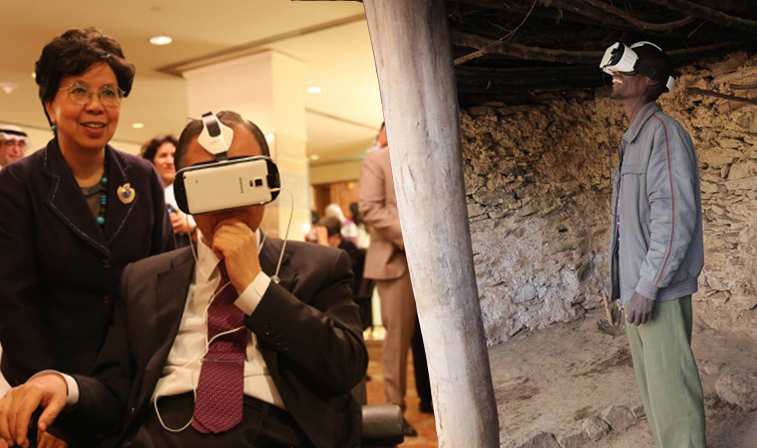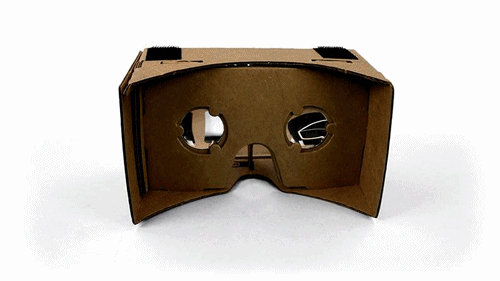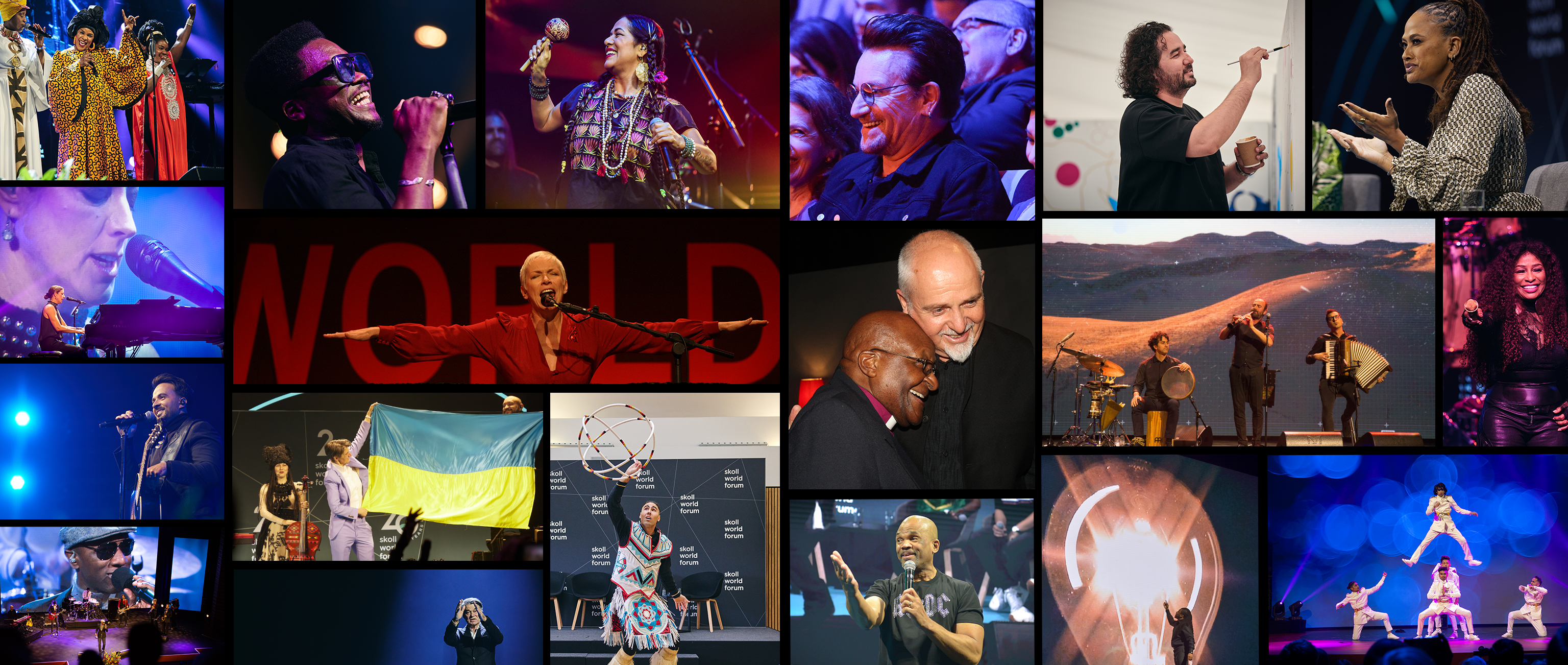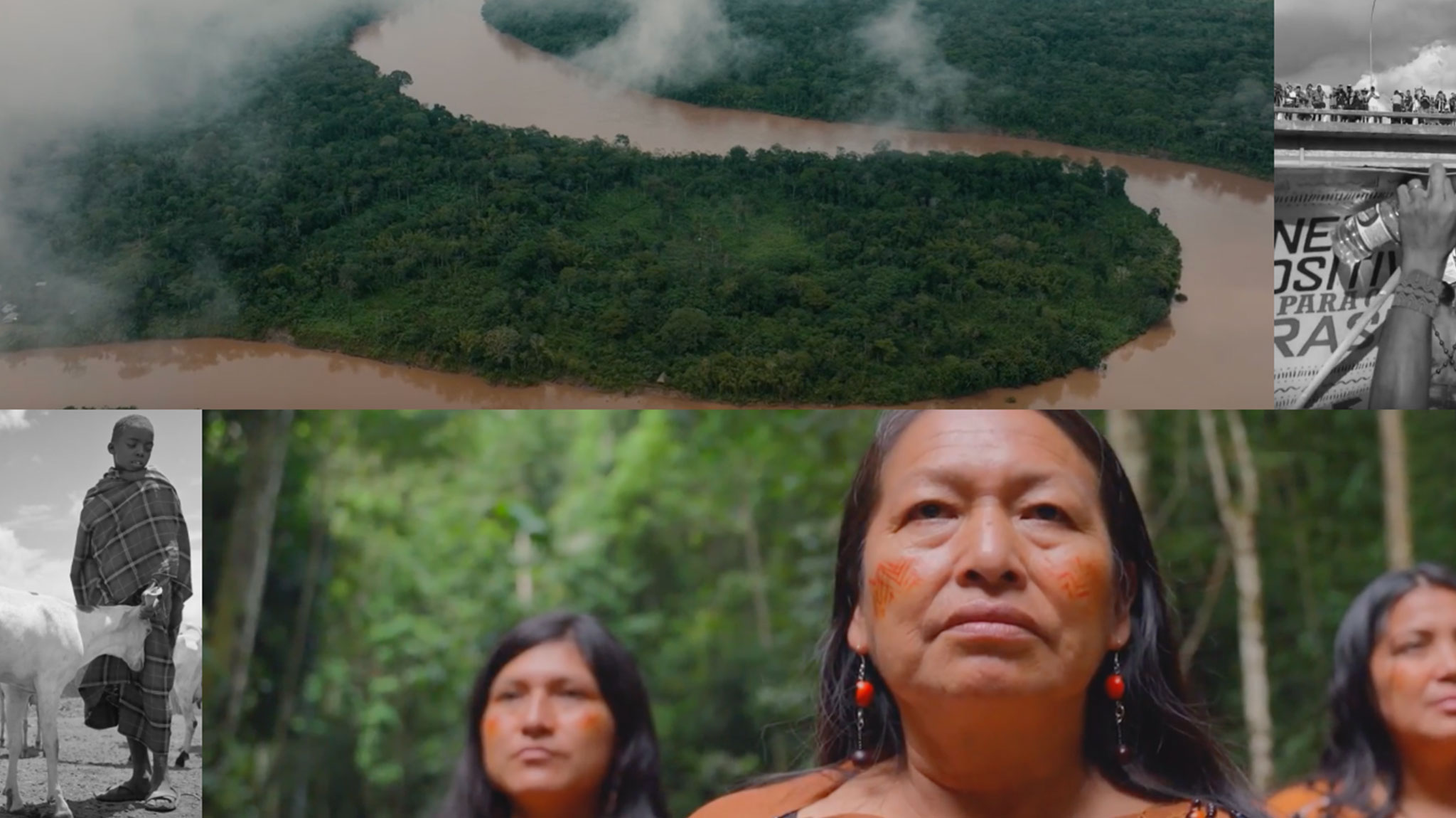The Sundance Film Festival this year celebrated 10 years of its New Frontier program, which highlights the intersection of technology and storytelling. One such feature was a virtual reality experience where visitors learned about land rights issues by examining the clash of Aboriginal and Western culture in rural Australia. The film, “Collisions”, produced by Lynette Wallworth as part of the Skoll-supported Stories Of Change initiative, is part of a growing movement to leverage virtual reality (VR) to drive deeper connections to social issues.
So we wanted to understand—what is being done in the social space when it comes to VR, does it really give audience a more empathetic experience, and what’s the return on investment for organizations?
“When you look at all the screens and types of content—TV, news, infographics—they all fit together. But VR is this crown jewel of content—the one that makes you feel the empathy because you’re one-to-one with the person. Syria to me used to just be whatever was on the news screen—explosions, war, etc.—but now there you are, standing in a marketplace with the people of Syria.” – Dan Silver, Executive Producer, ABC News Digital
While VR may not yet be consumer mainstream, news organizations have already been using the format to cover everything from the Paris bombings to military parades in North Korea, to the plight of Syrian refugees.
But it’s not just media that sees VR as a hot ticket for audience engagement. Foundations, non-profits, and the activist space are also recognizing the benefits and diving into what’s been tipped as “one of the best platforms for empathy and engagement.”

Image: World Bank President Jim Yong Kim experiences a refugee camp in Davos (left), while a man in Kenya experiences a charity:water project (right)
“The ability of VR to viscerally connect people with an idea or shine a spotlight on a topic—really outside of personally being there, [virtual reality is] as close as you can get.” – Chuck Peil, Vice President of Business Development and Strategic Partnerships, Reel FX
Knight Foundation recently gave a $580,000 USD grant to support VR via Emblematic Group and Frontline in order to produce VR films, and they also plan to produce guidelines for non-profits and foundations looking to get into the technology. But a host of other NGOs and activists have already been trying their hand:
Examples of Social Cause / Documentary VR
- Waves of Grace (UN, VRSE, and Vice collaboration about Ebola in Liberia)
- The Crossing (RYOT and HuffPo collaboration highlighting Syrian Refugees)
- Factory Farm (Animal Equity and ConditionOne collaboration on slaughterhouses)
- Perspectives (Specular Theory-produced piece that gives VR experiences on hot-button issues such as sexual assault and police violence)
- Use Of Force (Puts audiences on-scene as witnesses to the US border patrol’s killing of Anastasio Hernandez Rojas)
- Clouds Over Sidra (UN with VRSE)
- Growing Up Girl (ONE and RYOT collaboration highlighting girls education)
- The Enemy (Karim Ben Khelifa, where users get face to face with two combatants from opposing sides: an Israeli and a Palestinian soldier.)
- It Can Wait (AT&T and ReelFX collaboration on the issue of texting while driving)
- Nomads (Felix & Paul—coming soon to Oculus)
- Across The Line (Nonny de la Peña’s piece on the often abusive anti-abortion pickets outside Planned Parenthood—coming soon to Oculus)
Skoll Foundation-related Films:
- Collisions (Skoll, Ford, and Sundance Stories Of Change collaboration focusing on land rights and atomic testing)
- Meet Albina (Ciudad Saludable and RYOT collaboration highlighting Albina’s solutions to recycling in Peru)
What of The Results?
Amnesty International recently reported a 16 percent increase in signups for direct debit contributions after the first week of their Aleppo VR campaign. UNICEF New Zealand did a similar campaign on Syrian refugees and reported a twofold increase in donations.
“There’s numerical data from UNHCR showing that people will donate more from a VR experience than other forms of media.” – Aaron Koblin, co-founder and CTO, VRSE
Virtual reality offers the opportunity to see the world through a fresh pair of eyes. You are stepping inside a moment, a place, a community other than your own. Today’s VR headsets stand at the intersection of movie-like immersion and the compelling interactivity of games. In short, VR is an empathy machine.
An attendee who tried a recent Clinton Foundation Impact Update that was developed for VR had this to say:
“It is one thing to read and contextualize impact, but quite another when you can see the real difference it makes to a person’s life—and see it from their eyes. From this moment on, I truly felt an emotional connection to the foundation’s work in Kenya and Tanzania and appreciated the reality of these everyday problems that are so often looked over in favor of more dramatic conflict.
I don’t think I have been more blown away by a technological advance than this one. My gut reaction to that experience was that the future of virtual reality does not lie in the hands of Hollywood production houses or video game enthusiasts, but in those of documentarians and storytellers worldwide.”
But as New York Times filmmaker Ben Sullivan said:
“The more people try it the more the novelty will wear off and you’ll need to find stories that fit the medium rather than VR for the sake of VR.”
To paraphrase an old saying, writing about VR is like dancing about architecture. So grab a headset, download a free app, and see if you’re inspired to take the leap.
Article written by Phil Collis
Creative Director, Skoll Foundation



